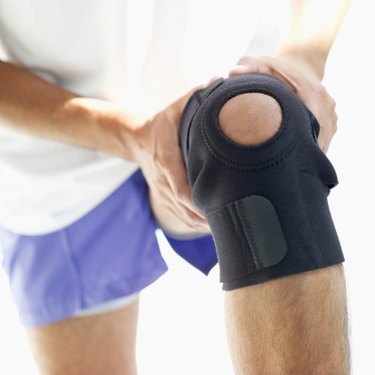
Your knee joint supports your body weight, absorbs shock and functions to straighten or bend your lower leg. Unrestricted movement at the knee joint is critical for pain-free walking, squatting and transferring.
Normal Motion
Video of the Day
Range of motion is typically measured using a tool called a goniometer. Normal ROM at the knee is considered to be 0 degrees of extension (completely straight knee joint) to 135 degrees of flexion (fully bent knee joint).
Video of the Day
Functional Motion
Most functional activities require 0 to 117 degrees of motion at the knee. Walking requires complete knee extension at heel strike and up to 60 degrees of flexion at the initiation of swing phase.
Impairments
Common causes of decreased ROM include arthritis, knee surgery and knee injuries. Antalgic gait might be noted, as well as difficulty transferring from sit to stand. Call your doctor if you are unable to bear weight on your knee, notice marked swelling or have a fever along with ROM impairments.
Prevention

Maintaining strength and flexibility in the muscles that control knee motion is crucial. The hamstrings are the primary knee flexors, and the quadriceps are the primary knee extensors. Move freely and fully every day to maintain knee health and longevity.
Resources
For treatment of ROM impairments or limitations, contact a physical therapist or consult your doctor.
Is this an emergency? If you are experiencing serious medical symptoms, please see the National Library of Medicine’s list of signs you need emergency medical attention or call 911.